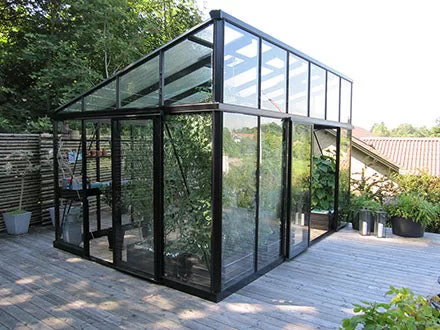The way everyday homeowners approach their outdoor spaces is rapidly evolving as innovative landscaping trends storm the gardening world. With advanced technology and elevated sustainability becoming integral focal points, transformative new directions aim to create dynamic, ecologically-friendly home gardens perfect for the modern era. Time to look deeper into seven groundbreaking trends leading the charge.
Dominance of Sustainability
Sustainability has grown into a dominant priority in DIY landscaping, transcending its perception as a passing fad and becoming an urgent necessity. But this decisive shift does not have to come at the expense of aesthetics or functionality. In fact, thoughtfully implementing sustainable solutions often enhances and elevates both visual appeal and practical versatility simultaneously.
For example, expansive rainwater harvesting barrels or tanks can pull double duty as graceful water features lending a relaxing ambience to surroundings. Carefully planned organic compost bins can provide the triple benefit of preventing food waste from entering landfills, naturally enriching soil health without chemicals, and serving as rustic-chic focal points defining spaces with eco-conscious charm.
Advent of Technology
Cutting-edge technology is leaving an undeniable mark on the DIY landscaping realm by introducing smart home garden devices and intuitive horticulture-focused apps. This places convenient, ultra-efficient maintenance assistance and control literally within gardening enthusiasts’ fingertips.
These transformative high-tech tools not only make essential upkeep tasks faster and simpler for home gardeners, but also actively contribute to sustainability goals by conserving precious resources like water and electricity that might otherwise be wasted through outdated analog methods.
Through technology’s thoughtful integration, tech-savvy green thumbs can fashion automated oases requiring very little hands-on effort while promoting responsible conservation principles.
Demand for DIY Pools and Spas
The demand for customized DIY swimming pools and therapeutic spas reflects the modern tendency to view private residential spaces as multifunctional sanctuaries catering to all lifestyle needs in lieu of vacationing elsewhere.
Within a home’s surroundings, these aquatic relaxation and entertainment features double as private recreational facilities for family bonding and hosting guests. Brandon Stephenson says “Pools are about family.” Stephenson, a DIY pool specialist is at the heart of this landscaping renaissance.
Garden pool houses that provide luxurious escapes from daily stresses through invigorating swimming exercise, then transform into open-air lounging patios afterward with dissolving barriers between water features and landscaping. And natural chemical-free swimming ponds leveraging plants’ biological filtration capacities provide sustainable alternatives.
With customized combinations promising personalized backyard escapes, expanding DIY water features into already landscaped plots both leverages and amplifies existing nature investments through harmonious merging.
Native Plant Landscaping
An escalating native plant movement is redefining gardens by reintroducing struggling ecosystems like indigenous forests, meadows and thickets once blanketing developed lands. Beyond climate-compatible attributes, native flora directly protects the specialized biodiversity called home by localized fauna for generations. Mature bur oaks, spice bushes and ferns replicate essential forest strata supporting nesting birds.
Milkweed offers imperiled monarch butterflies vital food and habitat. Once established, adapted native plants outperform imports needing extensive maintenance while benefiting wildlife. Blending beauty with self-reliance, native landscaping allows citizens to bolster disappearing localized biodiversity through simple reintroductions. Every rewilded garden bed or park improves prospects for vulnerable species losing essential habitat yearly.
Growth in Vertical Gardening
As urban living becomes denser, garden spaces are shrinking. Yet, the desire for greenery hasn’t diminished. Cue vertical gardening – a trend that maximizes “skyward” space.
These vertical oases can transform dull walls into vibrant, living artworks. And aren’t just limited to climbers and creepers; succulents, herbs, and even vegetables can thrive in vertical planters.
Rise in Homegrown Produce
The appeal for homegrown produce is multiple folds –quality control, saving money and the pure satisfaction of seeing your efforts bear fruit (quite literally!). Plus, you don’t need an expansive area to grow your veggies – containers and trellis systems can help you cultivate fresh produce in confined spaces.
This trend also encourages family bonding as children especially enjoy getting their hands dirty sowing seeds and watching them grow into edible delights.
Eco-friendly Water Features
As climate change consequences intensify, eco-conscious outdoor enthusiasts emphasize sustainable water features using captured precipitation or solar power instead of energy-intensive pumps and filters requiring intensive infrastructure. Rainwater harvesting systems with capacity to quench garden irrigation needs even during dry spells are also gaining immense popularity.
But in addition to bunker-like cisterns and barrels solely focused on practical water storage, there are creative ways to incorporate structures doubling as attractive visible features. Depending on desired aesthetic, collected rainfall can feed recirculating fountains, multiple cascading waterfall walls, meandering streams, or even naturalistic ponds bringing soothing auditory qualities along with irrigation functionality and wildlife habitat.
Preference for Perennials
The preference for perennials in gardens is growing for their ease of care and long lifespan. Diverse in shape, color and blooming seasons, perennial plants provide continual visual pleasure throughout the year.
Easy to plant and maintain, these plants can brighten up corners with their vibrant colors, soften structural outlines or even act as privacy screens without much effort. Their long lifespan means less time spent in replacing seasonal blooms.
Focus on Wildlife Attraction
The trend of wildlife-friendly gardens has been fuelled by growing awareness about the importance of supporting local fauna. From choosing plants that pollinators love to installing bird baths and feeders – nurturing native wildlife is a key trend in DIY landscaping.
Creating spaces where birds, insects and other creatures can find food and refuge not only adds charm to your garden but is also a step towards sustainability by helping maintain local biodiversity.
Lure Of Low-Maintenance Landscapes
Ease and simplicity are driving factors behind the lure of low-maintenance landscapes. People want to enjoy their outdoor spaces without investing much time or energy into maintenance.
This trend has significantly influenced plant selection – varieties that are drought-resistant or have lower water and care requirements are preferred. Additionally, materials like gravel or mulch are resistant to weeds and require significantly less upkeep than traditional grass lawns.
Merging Indoor and Outdoor Spaces
The lines separating indoor and outdoor home spaces are dissolving as integrated designs create seamless transitions embracing nature’s beauty. Retractable glass walls, screened porches with climate controls, and pergolas interwoven with flowering vines generate multi-season entertaining capacity by harnessing fresh air, sunshine and cooling ambience.
Strategic decking around pools also enables gradual living area extensions from patios into soaking areas for simultaneous garden enjoyment. Even urban balconies enjoy workarounds like vertical planters, awnings, and green walls immersed in sunlight and foliage.
Influence of Climate Change
Rising climate change turmoil through intensifying storms, protracted droughts, habitat loss, and unpredictable seasonal shifts factor heavily in planting decisions as gardeners now choose flora based on environmental resilience. Because beloved non-native varieties often lack adaptability traits bred over generations, native endemic plant species sustainably aligned with local rain and temperature norms show clear advantages.
Forward-thinking garden designs also increasingly embrace creative xeriscaping techniques reducing supplemental irrigation needs, thereby slashing water resource dependence. Tactics like utilizing reliable drought-hardy plants, adding moisture-retaining hardscape features, and installing subterranean irrigation systems fed by rain catchments accommodate uncertain futures.
With environmental stability in question, DIY landscapers focus on building harmony with local ecosystems. The goal is upholding aesthetic visions while respecting regional habitats under strain.
The Final Word
Current DIY landscaping trends reflect an earnest effort towards incorporating sustainability whilst harnessing technology’s convenience. Whether through embracing vertical gardening due to space limitations or choosing native plant ecosystems to foster local wildlife, these trends embody the adaptability of DIY enthusiasts around the world.
The future is clear – it’s about simplifying practices, respecting local ecosystems and merging practicality with aesthetics in your landscaping choices.

